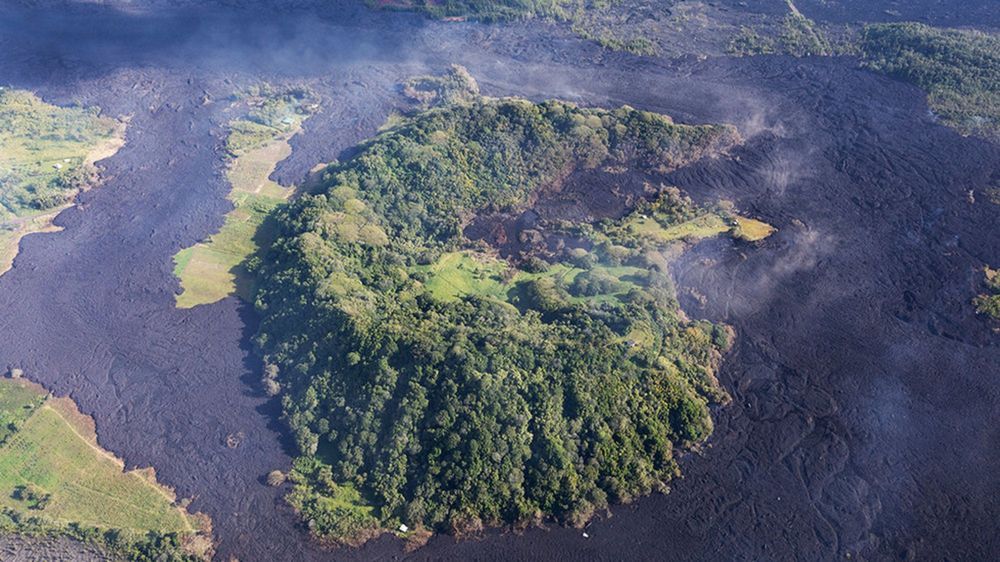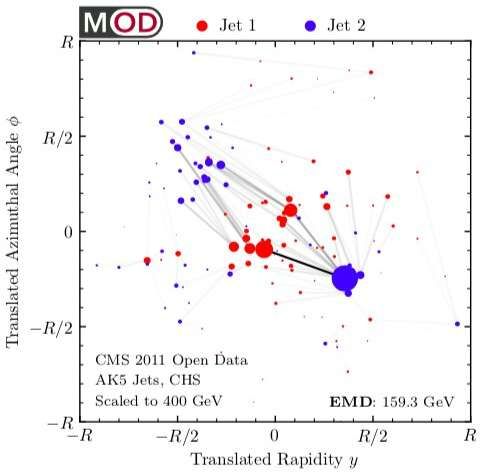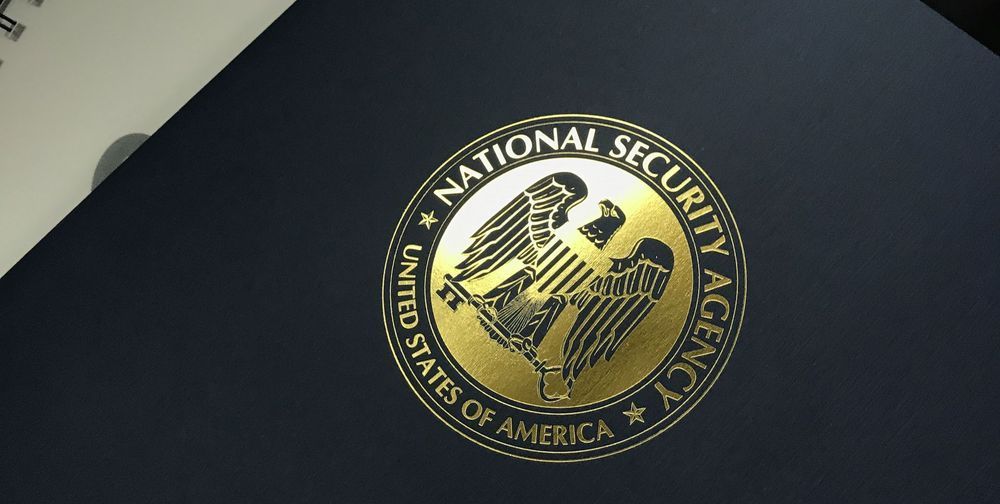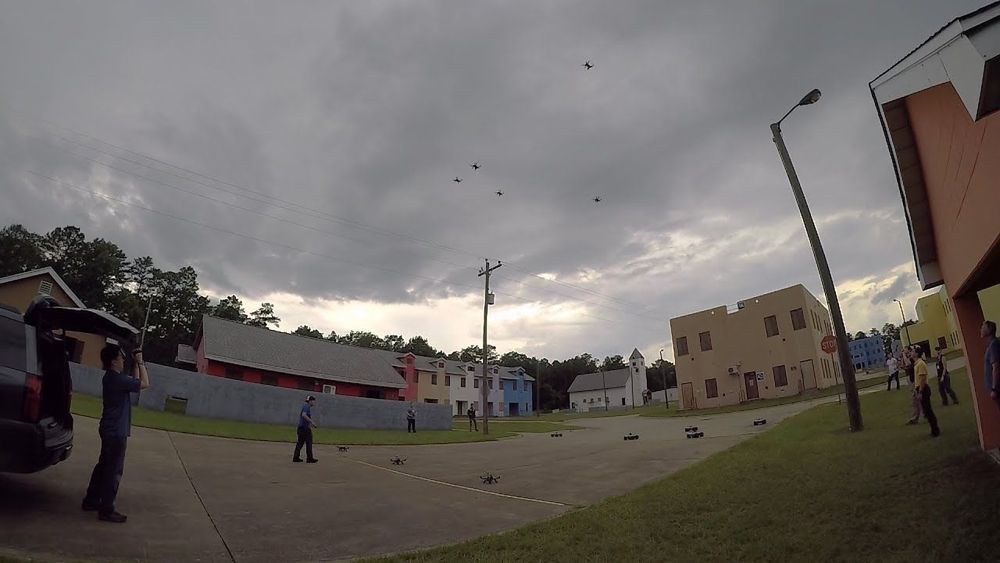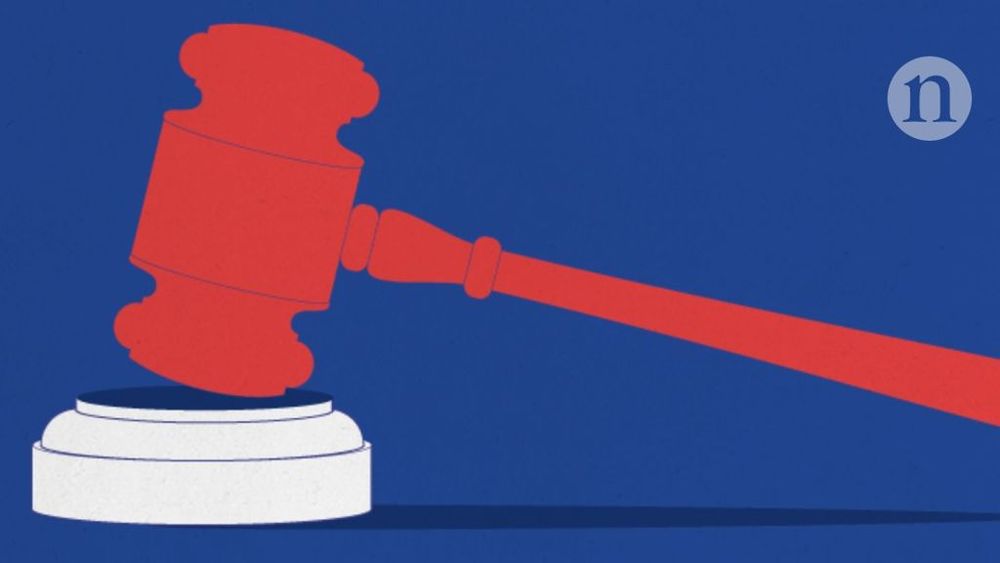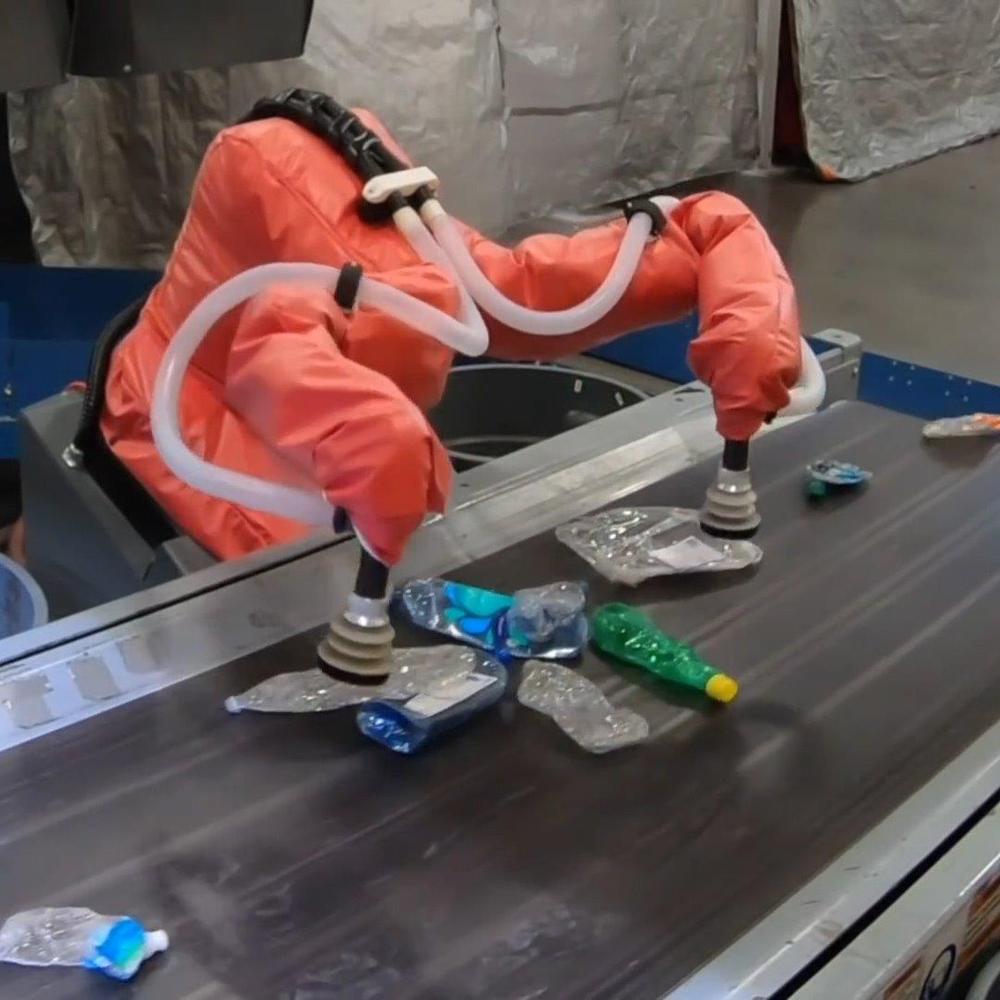Hawaii’s Kilauea volcano could be gearing up for an eruption after a pond of water was discovered inside its summit crater for the first time in recorded history, according to the AP.
Researchers at the Massachusetts Institute of Technology (MIT) have recently developed a metric that can be used to capture the space of collider events based on the earth mover’s distance (EMD), a measure used to evaluate dissimilarity between two multi-dimensional probability distributions. The metric they proposed, outlined in a paper published in Physical Review Letters, could enable the development of new powerful tools to analyze and visualize collider data, which do not rely on a choice of observables.
“Our research is motivated by a remarkably simple question: When are two particle collisions similar?” Eric Metodiev, one of the researchers who carried out the study, told Phys.org. “At the Large Hadron Collider (LHC), protons are smashed together at extremely high energies and each collision produces a complex mosaic of particles. Two collider events can look similar, even if they consist of different numbers and types of particles. This is analogous to how two mosaics can look similar, even if they are made up of different numbers and colors of tiles.”
In their study, Metodiev and his colleagues set out to capture the similarity between collider events in a way that is conceptually useful for particle physics. To do this, they employed a strategy that merges ideas related to optimal transport theory, which is often used to develop cutting-edge image recognition tools, with insights from quantum field theory, a construct that describes fundamental particle interactions.
Just five months ago at the RSA conference, the NSA released Ghidra, a piece of open source software for reverse-engineering malware. It was an unusual move for the spy agency, and it’s sticking to its plan for regular updates — including some based on requests from the public.
In the coming months, Ghidra will get support for Android binaries, according to Brian Knighton, a senior researcher for the NSA, and Chris Delikat, a cyber team lead in its Research Directorate, who previewed details of the upcoming release with CyberScoop. Knighton and Delikat are discussing their plans at a session of the Black Hat security conference in Las Vegas Thursday.
Before the Android support arrives, a version 9.1 will include new features intended to save time for users and boost accuracy in reverse-engineering malware — enhancements that will come from features such as processor modules, new support for system calls and the ability to conduct additional editing, known as sleigh editing, in the Eclipse development environment.
The Defense Advanced Research Projects Agency (DARPA) is experimenting with using a swarm of autonomous drones and ground robots to assist with military missions. In a video of a recent test, DARPA showed how its robots analyzed two city blocks to find, surround, and secure a mock city building.
DARPA conducted its test back in June in Georgia, featuring both drones and ground-based robots. The demonstration was part of DARPA’s OFFensive Swarm-Enabled Tactics (OFFSET) program, which is designed to eventually accompany small infantry units as they work in dense urban environments, and could eventually scale up to 250 drones and ground robots. The test back in June was the second of six planned tests, which DARPA says will increase in complexity as they happen over the next couple of years.
Bioethicists hope a national committee will help close loopholes in the country’s biomedical ethics regulations.
Many phenomena of the natural world evidence symmetries in their dynamic evolution which help researchers to better understand a system’s inner mechanism. In quantum physics, however, these symmetries are not always achieved. In laboratory experiments with ultracold lithium atoms, researchers from the Center for Quantum Dynamics at Heidelberg University have proven for the first time the theoretically predicted deviation from classical symmetry. Their results were published in the journal Science.
“In the world of classical physics, the energy of an ideal gas rises proportionally with the pressure applied. This is a direct consequence of scale symmetry, and the same relation is true in every scale invariant system. In the world of quantum mechanics, however, the interactions between the quantum particles can become so strong that this classical scale symmetry no longer applies,” explains Associate Professor Dr. Tilman Enss from the Institute for Theoretical Physics. His research group collaborated with Professor Dr. Selim Jochim’s group at the Institute for Physics.
In their experiments, the researchers studied the behaviour of an ultracold, superfluid gas of lithium atoms. When the gas is moved out of its equilibrium state, it starts to repeatedly expand and contract in a “breathing” motion. Unlike classical particles, these quantum particles can bind into pairs and, as a result, the superfluid becomes stiffer the more it is compressed. The group headed by primary authors Dr. Puneet Murthy and Dr. Nicolo Defenu—colleagues of Prof. Jochim and Dr. Enss—observed this deviation from classical scale symmetry and thereby directly verified the quantum nature of this system. The researchers report that this effect gives a better insight into the behaviour of systems with similar properties such as graphene or superconductors, which have no electrical resistance when they are cooled below a certain critical temperature.
This robot sees and analyzes trash the same way a person does, but sorts it a lot faster 🤖.
The reasons electric aircraft make a lot of sense.
The electric aircraft sector — the number of electric aircraft in development increased by roughly 50% over the past year to 170.
Roland Berger: “All indications suggest that we may be on the cusp of a revolution in the aerospace and aviation industries.”
HOUSTON — (July 30, 2019) One of the most extensively studied genes in cancer, TP53 is well known for its role as a tumor suppressor. It senses cellular stress or damage, and in response stops cell division or initiates cell death, thereby preventing a damaged cell from reproducing. Mutation of this gene eliminates a key cellular fail-safe mechanism and is a step leading to cancer. Researchers at Baylor College of Medicine have conducted the most comprehensive study of TP53 mutations to better understand the processes leading to the inactivation of this important gene. Their findings, published in the journal Cell Reports, shed light on how the gene becomes mutated and how those mutations can help predict clinical outlook.
The team, led by Dr. Larry Donehower, professor of molecular virology and microbiology at Baylor College of Medicine, studied 10,225 patient samples from 32 different cancers, from The Cancer Genome Atlas, and compared them to another 80,000 mutations in a database collected over three decades by Dr. Thierry Soussi, professor of molecular biology at Sorbonne University. After analyzing this large data sample, they have a more thorough understanding of how the TP53 gene mutation impacts cancer.
The team found that across all cancer types studied, TP53 mutations were more frequent in patients with poorer survival rates. But they also identified a way to more accurately predict prognosis. Donehower said he identified four upregulated genes in mutant TP53 tumors, whose expression correlated to patient outcome.
New research centering around the Unruh effect has created a set of necessary conditions that theories of quantum gravity must meet.
Quantum physics has, since its development in the early years of the 20th century, become one of the most successful and well-evidenced areas of science. But, despite all of its successes and experimental triumphs, there is a shadow that hangs over it.
Despite successfully integrating electromagnetic, the weak and strong nuclear forces — three of the four fundamental forces — quantum physics is yet to find a place for gravity.
